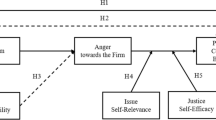Abstract
Corruption at charitable organizations is, if not growing, becoming more evident to the public. Highly visible scandals reduce confidence in nonprofits generally and may permanently reduce donations. Existing work on malfeasance in the nonprofit sector has analyzed the characteristics of charities where corruption has occurred. What has not been examined in the literature is whether scandals have impacted contributions as a whole. If donations are unaffected by corruption, then there is little incentive to support systemic reforms. This paper will explore the impact of visible corruption on the level of giving by individuals. An econometric model that incorporates the primary drivers of donations will be developed, including such factors as income, net worth and tax policy, coupled with personal attributes, such as religious affiliation. When measures of the magnitude of press coverage of corruption are added to the model, they test as significant, indicating publicized scandals are, in fact, suppressing donations. This analysis contributes to the literature on organizational reputation and its impact on performance.

Similar content being viewed by others
Notes
This can be contrasted with the endless coverage of the Sandusky scandal, which indirectly impacted the charity started by Sandusky, Second Mile.
The Central Remedial Clinic provides services to handicapped children and adults.
References
Archambeault, D., S. Webber, and J. Greenlee. 2015. Fraud and Corruption in U.S. Nonprofit Entities. Nonprofit and Voluntary Sector Quarterly 44(6): 1194–1224.
Bakija, J., and B. Heim. 2011. How Does Charitable Giving Respond to INcentives and Income? New Estimates from Panel Data, National Tax Journal 64 (2): 615–650.
Bennet, R., and H. Gabriel. 2003. Image and Reputational Characteristics of UK Charitable Organizations. Corporate Reputation Review 6 (3): 276–289.
Britton, R. 2007. Making Disclosure Regulation Work in the Nonprofit Sector. University of Illinois Law Review 437–58.
De la Fuente Sabate, J., and E. de Quevedo Puente. 2003. Empirical Analysis of the Relationship Between Corporate Reputation and Financial Performance: A Survey of the Literature. Corporate Reputation Review 6 (2): 161–177.
Deephouse, D., et al. 1997. The Effect of Financial and Media Reputation on Performance. Corporate Reputation Review 1: 68–71.
Dunbar, R., and J. Schwalbach. 2000. Corporate Reputation and Performance in Germany’. Corporate Reputation Review 3 (2): 115–123.
Ebrahim, A. 2011. The Many Faces of Nonprofit Accountability. In The Jossey-Bass Handbook of Nonprofit Leadership and Management (3rd Edition), ed. D. Renz and R. Herman. San Francisco: Wiley and Sons.
Fremont-Smith, M. 2004. Pillaging of Charitable Assets: Embezzlement and Fraud. Exempt Organization Tax Review 46 (33): 333–348.
Fremont-Smith, M., and A. Kosaras. 2003. Wrongdoing by Officers and Directors of Charities: A Survey of Press Reports 1995-2002. Exempt Organizations Tax Review 42: 25–59.
Garrett, T., and R. Rhine. 2010. Government Growth and Private Contributions to Charity. Public Choice 143 (1–2): 103–120.
Gibelman, M., and S. Gelman. 2001. Very Public Scandals: Nongovernmental Organizations in Trouble. Voluntas: International Journal of Voluntary and Nonprofit Organizations 12 (1): 49–66.
Greenlee, M., M. Fischer, T. Gordon, and E. Keating. 2007. An Investigation of Fraud in Nonprofit Organizations: Occurrences and Deterrents. Nonprofit and Voluntary Sector Quarterly 36 (4): 676–694.
Hammond, S., and J. Slocum. 1996. The Impact of Prior Firm Financial Performance on Subsequent Corporate Reputation. Journal of Business Ethics 15 (2): 159–165.
Holfreter, K. 2008. Determinants of Fraud Losses in Nonprofit Organizations. Nonprofit Management and Leadership 19 (1): 45–63.
Light, P. 2008. How Americans View Charities: A Report on Charitable Confidence. Issues in Governance Studies, 15.
McGuire, J., T. Schneeweis, and B. Branch. 1990. Perceptions of Firm Quality: A Cause or Result of Firm Performance? Journal of Management 16 (1): 167–180.
Meijer, M. 2009. The Effects of Charity Reputation on Charitable Giving. Corporate Reputation Review 12 (1): 33–42.
Miller, J. 2002. The Board as a Monitor of Organizational Activity: The Applicability of Agency Theory to Nonprofit Boards. Nonprofit Management & Leadership 12 (4): 429–450.
Neely, D. 2011. The Impact of Regulation on the U.S. Nonprofit Sector: Initial Evidence from the U.S. Nonprofit Integrity Act of 2004. Accounting Horizons 25(1): 107–125.
Padanyi, P., and B. Gainer. 2003. Peer Reputation in the Nonprofit Sector: Its Role in Nonprofit Sector Management. Corporate Reputation Review 6 (3): 252–265.
Rhoades, D., and A. Packel. 2009. Ethics and Nonprofits. Stanford Innovation Review: Stanford University.
Roberts, P.W., and G.R. Dowling. 1997. The Value of a Firm’s Corporate Reputation: How Reputation Helps Attain and Sustain Superior Profitability. Corporate Reputation Review 1: 72–75.
Roberts, P., and G. Dowling. 2002. Corporate Reputation and Sustained Superior Financial Performance. Strategic Management Journal 23 (12): 1077–1093.
Steinberg, R. 2010. Principle-Agent Theory and Nonprofit Accountability. In Comparative Corporate Governance of Non-Profit Organizations, ed. K. Hopt and T. von Hippel. Cambridge: Cambridge University Press.
Walker, K. 2010. A Systematic Review of the Corporate Reputation Literature: Definition. Measurement and Theory, Corporate Reputation Review 12 (4): 357–387.
Author information
Authors and Affiliations
Corresponding author
Rights and permissions
About this article
Cite this article
LeClair, M.S. Reported Instances of Nonprofit Corruption: Do Donors Respond to Scandals in the Charitable Sector?. Corp Reputation Rev 22, 39–47 (2019). https://doi.org/10.1057/s41299-018-0056-5
Published:
Issue Date:
DOI: https://doi.org/10.1057/s41299-018-0056-5




